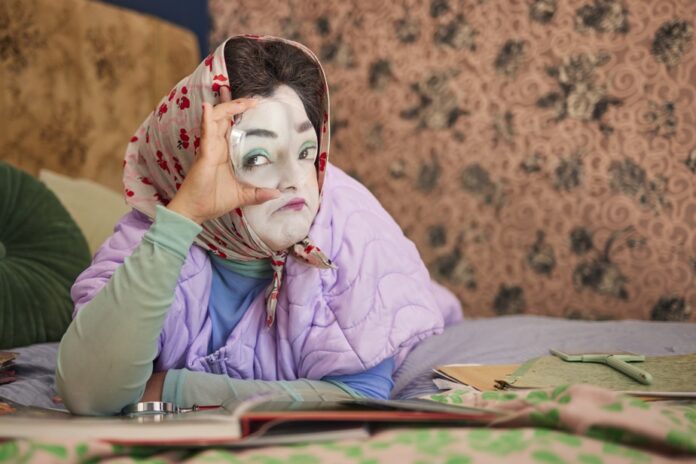Glob, Julieta, The GoldenCrust family, The afternoon falls when your cookies are ruined… Montréal Complètement cirque has at least four shows featuring clown artists. A contrast with the programming of recent years. Chance or coincidence?
“It’s no coincidence,” replies the general and artistic director of TOHU and the Complètement cirque festival, Stéphane Lavoie.
“We really wanted to present this work,” he explains. In particular the show Julieta, which we co-produce. We must not forget that the clown has a freedom that allows him to break down barriers and take us to very emotional areas. As soon as he sets foot on stage, we are elsewhere. »
Over the past 50 years, clowning in Quebec has experienced several waves… and wave troughs.
The references have also changed a lot. From Rodrigue “Chocolat” Tremblay or Sonia “Chatouille” Côté, to Philippe Trépanier or Krin Haglund, via Reynald Bouchard, Yves Dagenais or Nathalie Claude, clowning has known several incarnations.
The red-nosed clown, for example, is now much more discreet on our stages. Circus companies instead put forward acrobats or actors who perform physical theater or acrobatic comedy. Even Cirque du Soleil now works with “noseless” clowns.
“Unfortunately, we don’t have many ‘adult’ clown models in Quebec,” regrets the artistic director of Complètement cirque. There was Sol, of course [the late Marc Favreau], but that’s pretty much our only reference, while in Europe or South America there are many more examples. »
Since 2015, the National Circus School of Montreal (ENC) no longer offers a specialty in clowning, preferring to offer a course in clowning to all of its students. A choice that necessarily had an impact on the number of artists who practice this discipline.
“It had become more and more difficult to recruit young people in this course, says the director general of the ENC, Éric Langlois. It is also a specialty that requires a certain maturity since your material is based on your observations and your reading of society. But the students are quite young at this stage. »
The director general of the ENC does not rule out reintegrating this specialty one day, but for the moment, he considers that the students benefit from a training which contributes to their versatility, one of the objectives of the School – which offers them in addition the possibility of specializing in one or two disciplines.
This is the case of Éline Guélat, the Swiss half of the duo La Croustade, which she forms with Quebecer Vincent Jutras. With the acrobatic piece The afternoon falls when your cookies are ruined, the circus artist who graduated from the ENC in 2019 mixes acrobatics and clowning without complexes.
“I have no emotional attachment to a circus discipline,” she tells us. I don’t want to be put in a box, and the clown’s apparatus is his red nose. But it’s also something sacred, I don’t want to wear it anyhow, I don’t have clown training. »
Nevertheless. The artist, who does contortion, the Cyr wheel and the Chinese pole, has completely integrated the art of clowning into his game.
In Biscuits, the first show of La Croustade, the duo who dance and multiply acrobatics have fun drawing parallels between the world of childhood and that of adults. “Why is it that as a child we love to cook, but as an adult we find it awful?” Why did we stop playing? We raise these kinds of questions,” says Vincent Jutras.
The Mexican circus artist Gabriela Muñoz (who now lives in Finland) also believes in the need to be exposed to the oblique gaze of the clown. The loss of her great-aunt Julieta, to whom she was very close, then of her dad, Jaime, with whom she shared the same humor, inspired her to write Julieta, which is interested in our aging. A non-verbal show that she interprets with tenderness and humor.
“The clown is a mirror of society, and more than ever people need spaces where they can travel, in their head and in their heart,” she believes. In recent years, the profession of clowning has evolved in the right direction, she believes, especially for women, who have always had difficulty breaking into this environment dominated by men.
Most clowns today have therefore put away their red noses, but not all. The founder of Foutoukours (pronounce in one breath to appreciate the pun), Rémi Jacques, is one of them.
This clown-acrobat, who presents this summer with his accomplice Jean-Félix Bélanger the piece Glob, recognizes that the form is constantly evolving, but he always favors the classic codes of the clown – red, white, black, etc. – taking care to explore all the textures of this art in each show.
His silent show – presented at the Avignon festival last summer – is, according to him, a cross between the play Waiting for Godot and the show Slava’s Snowshow (by the Russian clown Slava Polunin). Two characters are waiting for who knows what in an equally mysterious space, of which they are prisoners…
“When people come out of the room, they tell completely different stories, which is what I find interesting. »
Finally, there are the Two of Spades, Philippe Trépanier and Tamara Bousquet, who represent their clownish show La famille GoldenCrust, a burlesque comedy featuring a couple of snowbirds. Regardless of the form, Stéphane Lavoie wants to take the risk of programming these pieces.
“It’s always a risk,” he says, “because of the prejudice people have about clowns, but you have to take it. A decision that will certainly encourage artists devoting themselves to this art. “It’s really difficult for us, concludes Rémi Jacques, because it can take us two or three years to design a new creation. But we are always happy to finally be able to present our work. »















